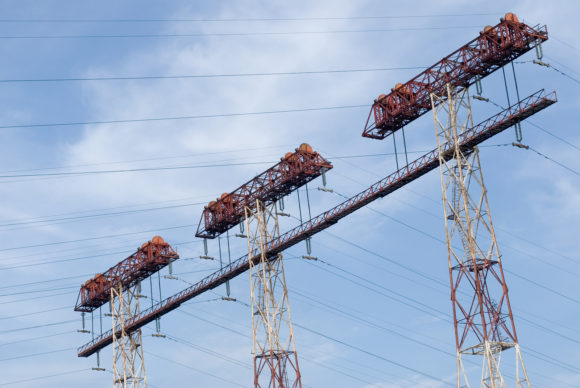California’s governor is sparring with the state’s largest utility over who decides when to cut the power.
It’s a no-win situation: As hot, dry winds sweep across the state, switching off the electricity is seen as a needed measure to keep power lines from sparking wildfires. But making the call is a thorny political challenge.
PG&E Corp. raised the issue Friday in a letter to Governor Gavin Newsom at a time when rising temperatures resulting from climate change leave the state with millions of acres of bone-dry vegetation just as seasonal windstorms arrive.
“The utility doesn’t want to make the call, and the governor doesn’t want to make the call,” said Kit Konolige, a utilities analyst for Bloomberg Intelligence. “People are going to be unhappy either way, if the power goes out or if there’s a fire.”
In the letter, Bill Johnson, PG&E’s chief executive officer, said he believes “a policy conversation is in order” on whether the state’s utility regulator or its fire agency “be empowered as the authority to make such decisions.”
The governor’s response: Such a change would be tantamount to a bailout for the beleaguered utility. “I do not support bailing out PG&E,” Newsom said Tuesday at a clean tech event in Oakland. “Then they are off the hook.”
The back and forth comes after Newsom and others blasted PG&E over its handling of the blackout affecting 2.3 million residents earlier this month, accusing the company of doing a poor job of informing residents and local governments during the event and cutting off service to more customers than necessary.
PG&E’s wires have been blamed for blazes in the past two years, including the deadly Camp Fire in 2018. Intentional blackouts are an extreme effort by the bankrupt utility to prevent that from happening again, but they come with political risk. State regulators have already approved utilities’ safety plans to cut off power, as a last resort, to prevent fires.
Also see: California blackout threat may last into next week
“There is commentary out there that we can’t be trusted to do this,” Johnson said during an emergency meeting Friday of the California Public Utilities Commission. “Public confidence in this decision is really important.”
Commissioner Genevieve Shiroma asked Johnson if he was “looking to give somebody else the responsibility versus digging down deep and looking at what meaningful changes need to be made.”
Johnson said he is not trying to evade liability. “I will take my accountability seriously and I will keep this one,” he said. “I am looking for the best decision for the public.”
He also noted that in other parts of the world facing similar issues, governments take a more active role in deciding when to cut power.
In Australia, for instance, the utility isn’t responsible for making the call. There, transmission network operators — the equivalent of California’s Independent System Operation, or ISO — are responsible for shutting down transmission lines during high winds or fires, according to the Australian Energy Market Operator. They may also be required to do so if directed by fire services.
PG&E has “to do their job,” Newsom said. “If they don’t want to do their job — if they are willing to submit that they simply can’t manage their system — that’s a different conversation.”
–With assistance from David R. Baker and James Thornhill.
Was this article valuable?
Here are more articles you may enjoy.


 Truckers Who Fail English Tests Get Pulled Off Roads in Trump Crackdown
Truckers Who Fail English Tests Get Pulled Off Roads in Trump Crackdown  ‘Dream Is in Sight:’ Chamber, Reinsurers, Insurers Urge Florida to Stay the Course
‘Dream Is in Sight:’ Chamber, Reinsurers, Insurers Urge Florida to Stay the Course  Standard Chartered Settles $2 Billion Iranian Sanction Suit in London
Standard Chartered Settles $2 Billion Iranian Sanction Suit in London  Tesla Drivers Are Buying Escape Tools and Cars to Avoid Getting Trapped Inside
Tesla Drivers Are Buying Escape Tools and Cars to Avoid Getting Trapped Inside 